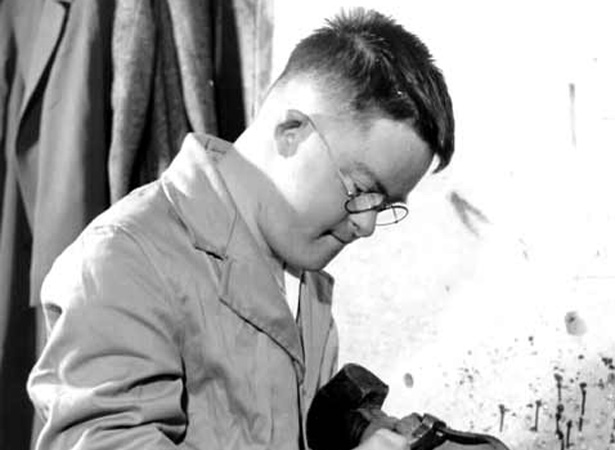
At a meeting in the British Medical Association (BMA) Rooms on the Terrace in Wellington, an interim committee for the Intellectually Handicapped Children’s Parents’ Association (IHCPA) – the forerunner to IHC – was formed.
The driving forces behind the establishment of the association were Harold (Hal) and Margaret Anyon of Khandallah. Their youngest son Keith had been born with Down syndrome. The common practice of the time was for people with intellectual disabilities to be placed in institutions away from their families and out of sight of the community. The Anyons refused to consider this for their son.
A notice in the Evening Post of 24 October 1949 invited ‘parents and guardians of backward children in the Wellington district … to attend a meeting … to consider the formation of a parents’ association’. The 22 parents who turned up established an interim committee that called another meeting for late November.
Margaret Anyon busied herself typing and distributing letters, minutes, press releases and other relevant documents to raise the profile of the fledgling association. With a general election imminent, telegrams were sent to Prime Minister Peter Fraser and Minister of Education Terence McCombs highlighting the lack of spending on the ‘education of handicapped children’. It was time to ‘awaken the country’s responsibility to a class of children at present ignored by society, but who could with proper training be adjusted to good citizenship’.
At a meeting on 23 November, 50 parents elected Hal Anyon as the association’s president and Margaret Anyon as its secretary. A Dominion Conference in Wellington in April 1950 helped establish branches in other centres. By 1953 the IHCPA had a thousand members.
The IHCPA condemned the placement of children in large institutions like Templeton (Christchurch) and Kimberley (Levin), where they ‘deteriorated physically and mentally’. They favoured the purchase of suitable homes around the country for use as short-stay residences. Each would have its own dining room, separate bedrooms for each child and an independent staff of four adults. Initially these facilities were funded by donations, as the government was unwilling to commit resources to the initiative. In 1959 the New Zealand branch of the BMA criticised the policy of housing people with intellectual disabilities in large institutions. This time the government responded by funding the IHCPA to provide a range of services. Overall policy changed little, and it was not until 1974 that the government imposed a moratorium on the expansion of psychiatric and psychopaedic hospitals.
The organisation changed its name to Intellectually Handicapped Children’s Society in 1962, New Zealand Society for the Intellectually Handicapped in 1975, and IHC New Zealand Inc. in 1994. The initials no longer stand for ‘intellectually handicapped children’, but they have been retained because the name is so well-known.
IHC advocates for the rights, welfare and inclusion in society of all people with an intellectual disability, and helps them live satisfying lives in the community. Terms such as ‘backward’ or ‘handicapped’ are no longer used. Further evidence of this shift in attitude was the closure of Kimberley Hospital in October 2006. Opened in 1945, it was the last major institution in the country housing people with intellectual disabilities.
The Disabled Persons Employment Promotion Repeal Act 2007 ensured that people with intellectual disabilities had the same employments rights as other workers. IHC continues to promote real employment opportunities and campaigns for children with disabilities to have full access to their local schools.
External links
How to cite this page
'Foundation of IHC', URL: https://nzhistory.govt.nz/foundation-of-ihc, (Ministry for Culture and Heritage), updated 9-Sep-2020

Community contributions